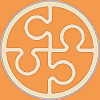Of particular interest, however, is the development of liberalism with these Catholic orders, and for this there are two streams: the Free Catholic, inspired by Unitarianism going off in that direction, and particularly Joseph Morgan Lloyd Thomas, and the Liberal Catholic, with the infusion of Theosophy, via James Ingall Wedgwood and Charles Webster Leadbeater. There is also a pre-theosophical strand here, just before these two, in the impact of Arnold Harris Mathew, of the British version of the Old Catholic Church - and he was for a time a Unitarian. Another important character is Ulric Vernon Herford, a Unitarian turned Liberal Catholic. In 2006/ 2007 there seems to be a little bit of an organised revival going on and thus the developments of the early twentieth century are being revived. There are clear Unitarian roots to some of these developments, managed by individuals, and there is the ongoing small Liberal Catholic Church International (where theosophy is now optional) and the Open Episcopal Church, which looks back to before Theosophy and one supposes wants to be as with the Old Catholic Church. All these groups are liberal, and all are not Reformed but only Catholic (once clear of Unitarianism, and Free Catholic Unitarianism is somewhat rejected by the General Assembly of Unitarian and Free Christian Churches). In other words they are clerical and this clericalism upholds real presence (bread and wine), another belief these groups seem to share.
This is another example of the influence of the broad and anti-denom
 inationalist James Martineau, who died in 1900 (pictured right as an elderly gentleman). Martineau inspired J. M. Lloyd Thomas with his liturgical conservatism, individualist open belief subjectivism, and a broad Church outlook. It is also one line of the outlook of the Presbyterian Richard Baxter. Nevertheless J. M. Lloyd Thomas and W. E. Orchard took this outlook into the heights of Catholicism.
inationalist James Martineau, who died in 1900 (pictured right as an elderly gentleman). Martineau inspired J. M. Lloyd Thomas with his liturgical conservatism, individualist open belief subjectivism, and a broad Church outlook. It is also one line of the outlook of the Presbyterian Richard Baxter. Nevertheless J. M. Lloyd Thomas and W. E. Orchard took this outlook into the heights of Catholicism.My essay looks into this in detail, and shows a disjuncture between Catholicism in orders and liberalism in belief without an active Reformed agent. The question is one of identity and form, and what is a sideline of Christianity, and one route revived that is finding a rich worship whilst rejecting selective literalism and dogma.
The essay is found in the Learning Area - Religion - Denominations - Independent Catholicism.
Incidentally, in the light of the new work on such Independent Catholicism, and with a consideration of Unitarian events in the United States 1870-1882, the talk given to Sea of Faith Yorkshire on 22 September 2007 has been revised for its continued life on the World Wide Web. It is found here but I have left the original talk unchanged here for the sake of a record of what was given. These are in the Learning Area - Religion - Academic - Sociology of Progressive Religious Groups .



4 comments:
You might also be interested in taking a look at the history of the Philippine Independent Church, which I understand originated as a Unitarian organization, became persuaded of the Apostolic Succession (etc.) & sought orders from The Episcopal Church (PECUSA as was).
Traditionally, their BCP has been the St. Augustine's Prayer Book published by the Order of the Holy Cross.
It is in there, as one of those Churches that was not just an individual or two, but thanks for that about St. Augustine's Prayer Book published by the Order of the Holy Cross. I'll have a look for that and see if I can find out more.
Noticed a reference to King's Chapel, Boston as "something of a working liturgical museum". It is certainly "working" but hardly a museum. Its Prayer Book was revised as recently as 1985. It has no links, needless to say, with groups interested in "valid orders". Its first independent minister was ordained by the congregation and it remains a congregational church in polity, unitarian Christian in theology, and anglican in worship. I am an Episcopalian priest (in my case belonging to the Diocese of Sydney but also, like a number of American Episcopalian priests, also a member of King's Chapel.
(The Revd Dr) John Bunyan
Yes, I overstate the point - which is that it retains a method and habit of worship rather lost to Unitarianism within the United States and United Kingdom, which evolved away from this (Sheffield Upper Chapel created its own diverse Orders of Worship). Can it be right to say that its "Anglican" style in worship is Arian (eighteenth century meaning) or towards it in theology?
I raised it also as a contrast that it has not gone down the Free Catholic route either in terms of then seeking out any episcopal or "valid" orders. This is what I mean by being a museum - it stays in one place, in terms of the religious geography, and continues its non-engagement with the Puritan shadow even if its theology shifted at the time. It has a niche now and sticks to it.
Post a Comment